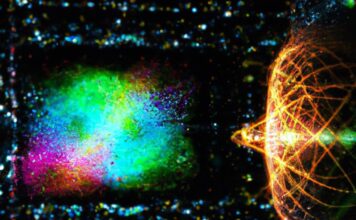Glaucoma patients often suffer from intraocular pressure, which can lead to vision loss if left untreated. Recently, American scientists have developed a new type of smart contact lens, which can track changes in intraocular pressure within 24 hours after the patient wears it.
The innovation helps patients and ophthalmologists grasp the state of the eyes and give the most appropriate medical treatment.
Whether the intraocular pressure is high or low, the new technology can measure it
Have you ever experienced a sudden increase in intraocular pressure? When the intraocular pressure is increased, headache, nausea, eye pain and blurred vision may occur. It is necessary to go to the hospital for testing to know the exact intraocular pressure change.
But if there are smart contact lenses that track eye pressure at any time after wearing them, would you want to wear them?
Chi Hwan Lee, an associate professor in the Department of Biomedical Engineering at Purdue University, developed a smart contact lens that can measure changes in a patient’s intraocular pressure 24 hours a day.
The research was published in the scientific journal Nature Communications.
Wearing smart contact lenses to prevent sight loss
Glaucoma is an eye disease in which increased pressure in the eye causes damage to the optic nerve, like a thief stealing a patient’s vision without a sound.
About 80 million people worldwide are affected by the disease, according to the Glaucoma Research Foundation of California.
Drugs are known to reduce pressure on the eyeball and reduce the risk of vision loss, but for many doctors and patients, IOP measurement technology has always had limitations.
Lack of instruments for long-term monitoring of changes in patients’ intraocular pressure, patients often have to spend time at the hospital so that doctors can grasp the exact symptoms and then prescribe the right medicine.
Li Zhihuan said that the new smart contact lens can meet the needs, not only to measure the patient’s intraocular pressure 24 hours a day, but even when the patient is sleeping.
“The increase in intraocular pressure occurs mostly when people lie down, and the intraocular pressure at night is about 10% to 20% higher than that during the day. Vision often disappears during sleep without the patient’s awareness, and even when self-measured during the day at the clinic and at home, the values appear to be normal. “
It took 6 years of research and development to wear it at night.
In order to effectively track intraocular pressure when falling asleep, Li Zhihuan spent 6 years developing smart contact lenses, focusing on sticktronics research:
For example, the sticker volume carries the technology of electronic products or smart technology, and develops unique wearable biomedical equipment to track the health status of chronic patients or general people.
Unique design helps glaucoma patients
Li Zhihuan said, “We designed a new smart contact lens that retains the characteristics of contact lenses, such as biocompatibility, softness, colorless transparency, moisture, oxygen permeability, and can be worn while sleeping.
These conditions are critical to glaucoma care, but are functions that are almost absent from current tonometers. “
Li Zhihuan added that because the tonometer of the new smart contact lens is not made of microchips,
Instead, it is made of thin, soft, and malleable elastomers, which are more comfortable than normal tonometers.
The new smart contact lenses can also easily wirelessly transmit the collected data to a nearby receiver, which can be paired with glasses or sleep goggles, or shared with a remote physician over the Internet.
Pete Kollbaum, an associate professor of optometry at Indiana University, who has conducted in-depth research on contact lens technology and has worked with Li Zhihuan for a long time, said: “The new smart contact lens measures the comfort of intraocular pressure.
It is indeed better than any tonometer on the market, because the intraocular pressure sensor technology developed by Li Zhihuan can be combined with contact lenses in a very thin form. After clinical trials, it is not only comfortable to wear, but also can be mass-produced. “
Li Zhihuan said that the new smart contact lenses are like ordinary contact lenses, allowing patients to choose the appropriate lens power to wear,
He believes that products can be of great help to patients and ophthalmologists to monitor eye health in a more affordable and comfortable way.
Li Zhihuan and his colleagues are preparing to conduct a clinical trial next step to test patients with dry eye syndrome and glaucoma who have undergone surgery.
Smart contact lenses
Li Zhihuan is not the first person to come up with smart contact lenses. Recently, many new technologies that are competing with contact lenses have come out, bringing about a wave of smart contact lens development.
Mojo Vision, a new American startup, claims that it can shrink the LED screen to the smallest size and make contact lenses with spherical surfaces, so that users can browse the screen while walking, and turn AR glasses into AR contact lenses.




